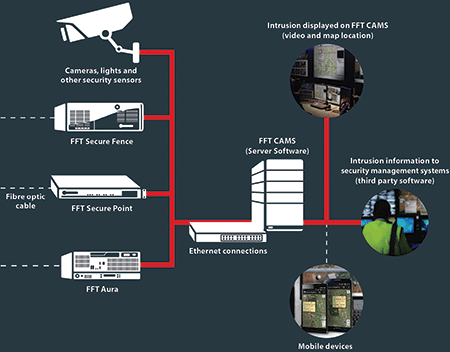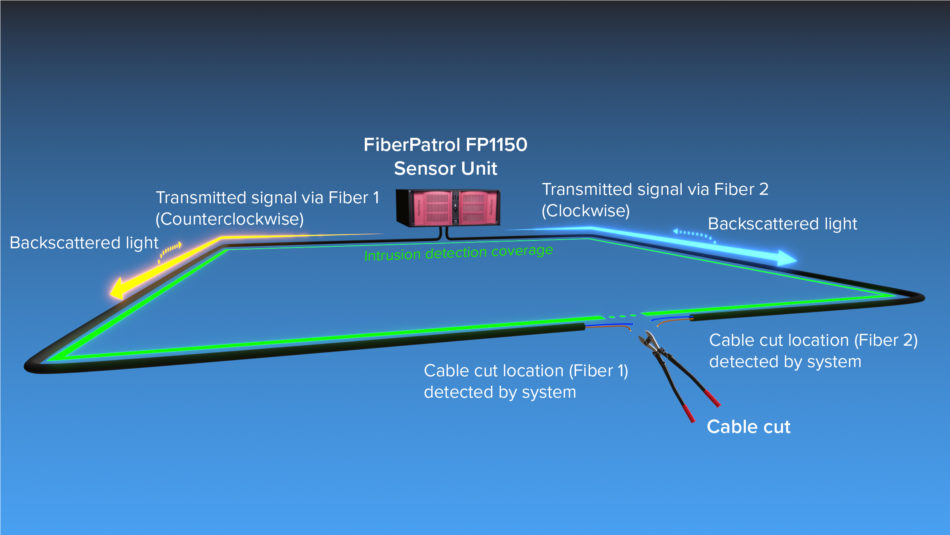How to Integrate a Fiber Optic Security System into Existing Security Setup for Enhanced Protection
How to Integrate a Fiber Optic Security System into Existing Security Setup for Enhanced Protection
Blog Article
The Ultimate Guide to Fiber Optic Safety And Security Solutions for Your Service
In an era where safety issues are paramount for organizations, understanding the ins and outs of fiber optic technology can be transformative. This guide lays out just how incorporating fiber optic security systems not only improves information defense yet additionally uses advantages like resistance to interference and real-time surveillance capabilities.
Recognizing Fiber Optic Technology

The core of a fiber optic cord consists of a slim glass or plastic center, bordered by a cladding layer that shows light back into the core. Single-mode fibers are created for long-distance transmission, while multi-mode fibers are suitable for shorter ranges, typically utilized within buildings.
Optical fiber are not just faster but also more protected than typical wiring. Their fundamental resistance to electro-magnetic interference and the difficulty of taking advantage of the signal without discovery make them a favored option for organizations prioritizing data honesty and security. As organizations increasingly count on protected and efficient communication systems, understanding fiber optic technology ends up being vital for informed decision-making.
Key Benefits of Fiber Optic Safety And Security
When thinking about safety options for a business, the advantages of fiber optic systems are particularly compelling. Fiber optic technology offers remarkable data transmission speeds and data transfer capability, making it ideal for managing high-resolution video feeds from surveillance electronic cameras. This capability makes sure that safety employees receive real-time data, enhancing overall reaction times to prospective safety and security hazards.
In addition, fiber optic wires are naturally immune to electromagnetic interference, which can endanger the honesty of typical copper-based systems. This resistance makes sure that the data transferred stays secure and undisturbed, giving an extra dependable safety framework. Additionally, fiber optics are much less prone to physical damages, as they are made from glass instead of steel, minimizing upkeep prices and downtime.
Another considerable benefit is the boosted scalability of fiber optic systems. As business requirements develop, fiber networks can be conveniently expanded to suit additional safety gadgets without substantial overhauls to the existing infrastructure. Fiber optic systems offer enhanced cybersecurity attributes, including file encryption capacities that protect sensitive data from unapproved accessibility. Collectively, these benefits make fiber optic safety and security systems a robust option for services looking for to enhance their protection procedures.
Installment Refine and Factors To Consider
Considering the complexities involved, the installation procedure of fiber optic safety systems calls for mindful preparation and websites implementation. The initial step involves an extensive site assessment to recognize optimum places for cabling and devices. This evaluation ought to take into consideration ecological variables, existing framework, and prospective vulnerabilities.

In addition, the setup needs to conform with regional building ordinance and sector requirements. This may consist of coordinating with different stakeholders such as building supervisors, IT groups, and safety employees to guarantee seamless assimilation with existing systems.
Post-installation, extensive testing is essential to verify system efficiency and determine any concerns that might occur. By focusing on these considerations Website throughout the setup procedure, companies can make sure a robust and reliable fiber optic safety system that meets their particular safety and security needs.
Most Current Advancements in Fiber Optic Safety And Security
Recent innovations in fiber optic innovation have dramatically improved the capabilities of safety and security systems for services. Among the most remarkable developments is the assimilation of fiber optic sensors that can find vibrations and invasions along the perimeter of a facility. These sensing units offer real-time surveillance, enabling fast action to prospective violations.
Additionally, the advancement of distributed fiber optic picking up innovation permits the constant surveillance of large locations with a single fiber cord. This approach not just reduces installation expenses yet also improves the integrity of keeping an eye on systems by removing the need for several, different sensors.
Moreover, developments in multiplexing methods have actually made it possible for services to send vast amounts of data over fiber optic networks, enhancing the capacities of video clip monitoring systems. High-def video feeds can now be sent out over lengthy ranges without loss of quality, guaranteeing that protection workers have access to clear and actionable details.
Lastly, the usage of synthetic intelligence (AI) in conjunction with fiber optic systems is reinventing hazard detection. AI formulas can examine information from fiber optic networks to determine unusual patterns or habits, enabling proactive safety and security steps. These technologies collectively represent a significant leap onward in fiber optic protection modern technology.
Picking the Right System for Your Business
Picking the proper fiber optic safety and security system for your business is critical for making sure optimal defense and peace of mind. To make an informed option, assess your details safety needs, considering aspects such as the size of your premises, the nature of your procedures, and potential susceptabilities.
Begin by reviewing the level of safety and security required; for circumstances, high-risk settings might require advanced systems with incorporated security and invasion discovery capabilities. Next, think about scalability; as your service expands, your protection system should visit this site right here can broadening to fit enhanced needs without significant overhauls.
Furthermore, examine the reliability and efficiency of numerous systems. Search for service providers with established track records and consumer reviews that attest to their solution top quality. It's likewise recommended to ask about the technology's compatibility with existing framework, making certain a smooth combination procedure.
Verdict
In conclusion, fiber optic protection systems provide a robust solution for improving business protection facilities. The latest technologies additionally strengthen the efficiency of these systems, ensuring that organizations stay secure and versatile in an ever-evolving hazard landscape.
Report this page